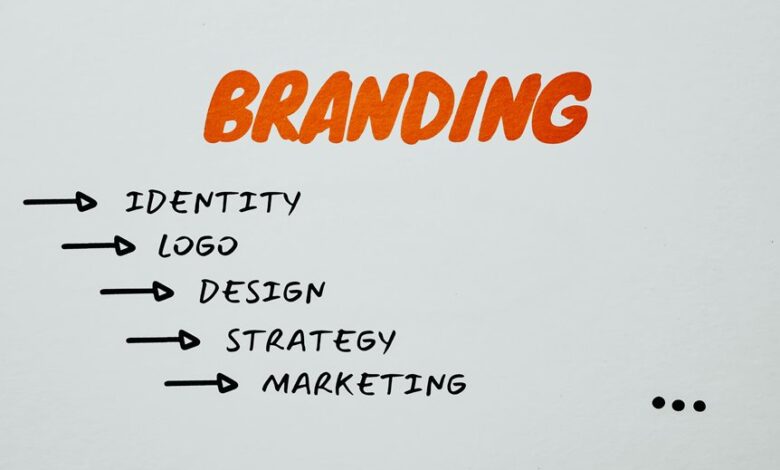Developing Brand Identity 3278298573

Developing brand identity requires a strategic blend of insights and creativity. It starts with a deep understanding of the target audience and the articulation of core values. A unique voice and visual identity must then emerge, consistent across all channels. This process not only builds recognition but also fosters loyalty. However, the journey does not end there; ongoing evaluation and adaptation are essential for relevance in an ever-changing market. What strategies will ensure lasting impact?
Understanding Your Target Audience
How can a brand truly resonate with its audience if it lacks a profound understanding of who that audience is?
By analyzing customer demographics and employing audience segmentation, brands can uncover the desires and motivations that drive their target market.
This knowledge empowers brands to craft messages that inspire, connect, and ultimately foster loyalty, creating a sense of freedom and belonging among consumers.
Defining Your Brand’s Core Values
While many brands focus on external factors such as market trends and visual aesthetics, the essence of a compelling brand identity lies in its core values.
Defining these values requires a clear mission statement that reflects brand ethics. By establishing a strong foundation rooted in integrity and purpose, brands can inspire loyalty and foster genuine connections, ultimately achieving freedom in their market positioning.
Crafting a Unique Brand Voice
Crafting a unique brand voice is essential for establishing a brand’s personality and ensuring consistency across various communication channels.
By clearly defining the tone and style that reflects the brand’s core values, businesses can engage audiences more effectively and foster brand loyalty.
A cohesive voice not only differentiates a brand in a crowded marketplace but also enhances recognition and trust among consumers.
Defining Brand Personality
A brand’s personality serves as its unique fingerprint, distinguishing it from competitors in a crowded marketplace. By utilizing brand archetypes, businesses can evoke emotional resonance with their audience, fostering a deeper connection. This unique voice, shaped by values and tone, empowers brands to resonate authentically, creating lasting impressions.
| Brand Archetype | Emotional Resonance | Example Brand |
|---|---|---|
| Hero | Inspiration | Nike |
| Caregiver | Nurturing | Johnson & Johnson |
| Rebel | Freedom | Harley-Davidson |
| Lover | Passion | Chanel |
Consistency Across Channels
Consistently maintaining a brand voice across various channels is crucial for fostering recognition and trust in an increasingly fragmented market.
Achieving cross-platform synergy enhances message uniformity, ensuring that audiences receive a coherent narrative regardless of the medium.
This strategic alignment not only strengthens brand identity but also empowers consumers, creating a sense of freedom in their engagement with the brand’s authentic essence.
Designing a Compelling Visual Identity
While many elements contribute to a brand’s identity, the visual identity serves as the most immediate and powerful representation of a company’s values and mission.
Effective logo design, combined with a thoughtful understanding of color psychology, can evoke emotions and resonate with target audiences.
A compelling visual identity not only attracts attention but also fosters a sense of freedom and connection with consumers.
Building Brand Consistency Across Channels
To ensure that a brand resonates effectively across all consumer touchpoints, establishing consistency in messaging and visual elements becomes paramount. Employing cross channel strategies fosters unified messaging, enabling brands to engage consumers authentically. The following table illustrates key elements for achieving brand consistency:
| Channel | Messaging Style | Visual Elements |
|---|---|---|
| Social Media | Casual | Vibrant Colors |
| Website | Professional | Clean Layout |
| Personal | Brand Logo | |
| Print Ads | Persuasive | High-Quality Images |
| Events | Engaging | Thematic Decor |
Measuring Brand Success and Adaptation
Achieving brand consistency across various channels lays the groundwork for effectively measuring brand success and adaptation.
Brand performance metrics provide essential insights into market positioning, while customer feedback analysis reveals authentic perceptions.
By integrating these elements, brands can pivot strategically, enhancing their resonance and relevance.
This analytical approach empowers brands to embrace change, fostering a dynamic identity that aligns with evolving consumer expectations and desires for freedom.
Conclusion
In the intricate tapestry of brand identity, each thread symbolizes a vital aspect of connection—audience understanding, core values, and visual storytelling. Just as a skilled weaver crafts a masterpiece, brands must intertwine these elements to create a cohesive narrative that resonates. The continuous cycle of feedback and adaptation acts as a compass, guiding brands through the ever-changing landscape of consumer expectations. Ultimately, a strong brand identity not only stands out but also endures, much like a timeless work of art.




